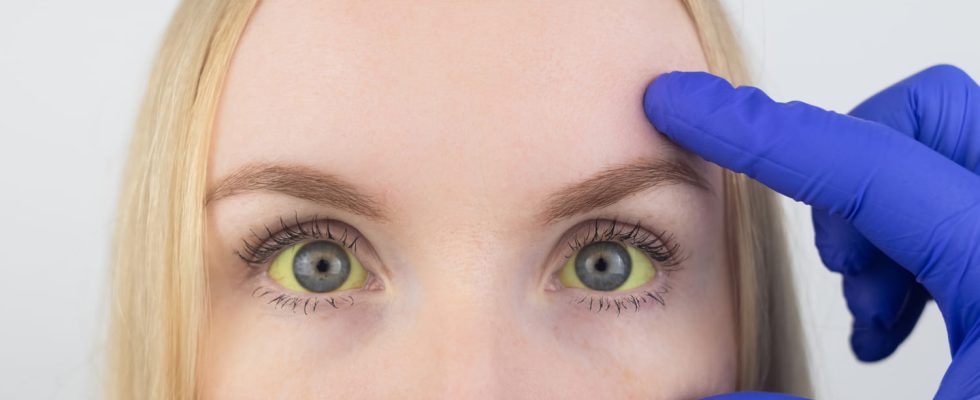Autoimmune hemolytic anemia is a blood disease characterized by an abnormal decrease in the number of red blood cells. It causes the same symptoms as a classic anemia.
Definition: what is hemolytic anemia?
Anemia means an abnormally low level of hemoglobin (protein in red blood cells that transports oxygen from the lungs to the tissues). Hemolytic anemia is more precisely characterized by destruction of red blood cells (red blood cells) by the body. It can be linked to autoimmune diseases characterized by dysfunction of the immune system and leading to the production of auto-antibodies that attack red blood cells, or make following the taking of drugs, toxicor be constitutional.
What are the symptoms of hemolytic anemia?
The symptoms of hemolytic anemia are identical to those of a “classic” anemia, namely:
- pallor,
- dizziness,
- ringing in the ears,
- tiredness,
- even an increase in respiratory rate.
- The consequences of hemolytic anemia can lead to jaundice (jaundice).
What are the possible causes of hemolytic anemia?
Hemolytic anemia can be hereditary (genetic origin) Or acquired as a result of drug treatmentpoisoning, septicaemic infectious episode (passage of bacteria in the blood), the installation of a cardiac prosthesis or even the bite of a poisonous snake. “We speak of extra-corpuscular hemolytic anemia when the hemolysis is linked to an anomaly outside the body of the red blood cell which is destroyed by antibodies, toxins or an infection. Conversely, if the hemolysis is due to an anomaly specific to the red blood cell, it is a corpuscular hemolytic anemia. In question, abnormalities of the membrane, abnormalities of hemoglobin (thalassemia, sickle cell disease) or even an enzyme deficiency“, develops Gaël Saintenoy, biologist.
The diagnosis is based on blood tests. Anemia is confirmed in the event of a decrease in hemoglobin on a complete blood count (NFS) with a normal MCV (Mean Globular Volume). The search for immature red blood cells (reticulocytes) shows an elevation of the latter. In the presence of anemia, the cause must be sought. Taking the case of autoimmune hemolytic anemia, the destruction of red blood cells is evidenced by the “direct Coombs testThis test demonstrates the presence of antibodies directed against red blood cells. Other blood tests may then be carried out to detect another autoimmune disease.
When and who to consult in case of hemolytic anemia?
“First, we consult your general practitioner in the event of persistent fatigue or suggestive symptoms. Depending on the results, he will be able to carry out the treatment himself or refer you to the appropriate specialist.“, informs the biologist.
Treatment for hemolytic anemia varies greatly depending on its cause. “If it is due to a toxin or a drug, the removal or treatment of it is enough. On the other hand, if it ishemolytic anemia linked to an autoimmune disease, treatment can be based on oral cortisone administration to stop the abnormal response of the immune system. In a subject with a red blood cell disease such assickle cell disease or thalassemiathe underlying pathology not being curable, symptomatic treatment is a priority“, says Gaël Saintenoy.
Thanks to Gaël Saintenoy, biologist
